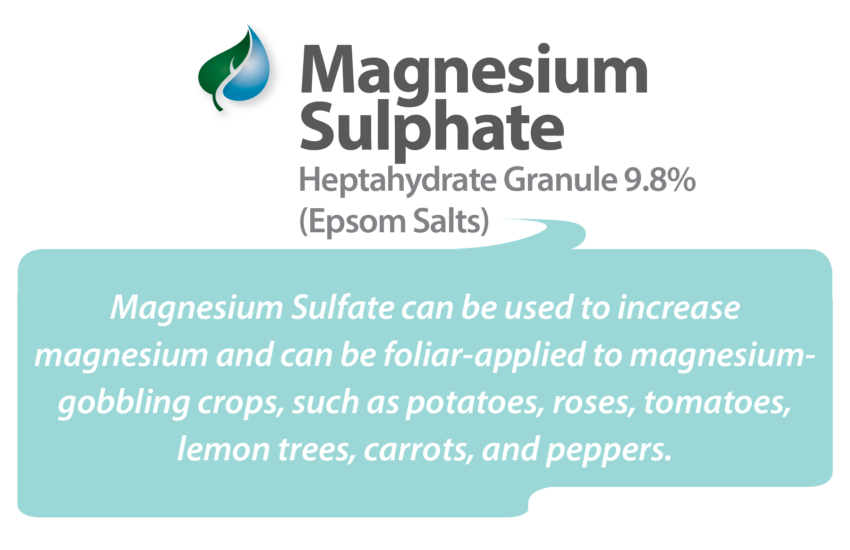Magnesium sulphate, often known as Epsom salts in most households, is a mixture of magnesium and sulphur, both of which are good for plant health. Magnesium is required for photosynthesis, hence shortage has an impact on leaf colour. Plant enzyme systems on the other hand are activated by sulphur WDG. Growth and colour changes occur when there is a sulphur shortage. Plants require the same amount of sulphur as they do phosphorus, despite the fact that sulphur is not one of the essential plant nutrients.
Plant leaves give clear symptoms that can be used to identify nutritional shortages. However, because the symptoms of magnesium and sulphur are so similar to those of other minerals, it’s important to distinguish between the symptoms of different nutritional deficiencies.
How do plants use Magnesium
Magnesium is a vital component of photosynthesis in plants. Chlorophyll can’t catch the sun’s energy for photosynthesis if it doesn’t have enough magnesium. In a nutshell, magnesium is essential for the green hue of leaves. Magnesium is found in enzymes, which are at the core of the chlorophyll molecule in plants. Magnesium is also utilised by plants in the metabolism of carbohydrates and the stability of cell membranes.
Magnesium deficiency in plants
Magnesium is essential for plant development and health. Magnesium shortage in plants is frequent in soils that are either deficient in organic matter or extremely light. By draining magnesium out of sandy or acidic soil, heavy rains can induce a deficit. Furthermore, if the soil has a lot of potassium, plants will take it instead of magnesium, resulting in a deficit. Plants suffering from a magnesium deficiency will exhibit distinct traits. Magnesium shortage initially manifests itself on older leaves, which become yellow between the veins and along the margins. The leaves may also be purple, crimson, or brown in colour. If left uncontrolled, the leaf and the plant will eventually perish.
Sulphur deficiency in plants
There are many sulphur suppliers in India who manufacture and supply different forms and varieties of sulphur and farmers purchase them according to their requirements. Sulfur aids in the development and health of plants. Sulfur is released during the breakdown of organic matter, which enriches organic and humus-rich soils. Due to the ease with which sulphur leaches from soil, the top layer of garden soil may be deficient, while deeper layers of soil have enough levels of this nutrient. Plants with deep roots can benefit from nutrients found in the soil’s bottom layers.
Magnesium Sulfate for Plant Care
If you have indications of magnesium or sulphur deficiency, don’t use magnesium sulphate to care for your garden plants. The addition of unnecessary nutrients upsets the equilibrium of other nutrients, which can lead to deficits when plants are unable to utilise certain elements that are present. When deficient symptoms appear, use 1 to 2 tablespoons magnesium sulphate diluted in a gallon of water as an Epsom salt for plants. With this solution, you can water as much as you like.
Fertilization is simplified with soil testing performed during plant bed preparation. Test kits may be purchased at garden supply stores. When soil testing reveals low amounts of magnesium and sulphur, magnesium sulphate, like dolomitic limestone, delivers the required nutrients without affecting the pH of the soil. Magnesium and sulphur shortages can be corrected by putting ten pounds of magnesium sulphate per 1,000 square feet of bed area into the soil.
Citrus is one of the crops that benefits the most from high magnesium levels in the soil. Detecting a deficiency in magnesium is extremely simple in many of them, such as kiwi.

